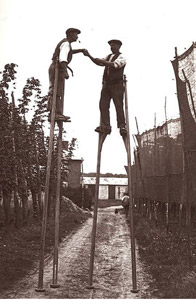It seems every news outlet in the Midwest has the story about Miller Brewing joining the chocolate beer crowd – like chocolate beers are something new.
Frederick Miller Classic Chocolate Lager, which includes chocolate and dark chocolate malts in the recipe, will be sold in Wisconsin, Chicago, Minneapolis, Cleveland, Indianapolis and Valparaiso/northwest Indiana. The suggested retail for the four-packs is $5.99.
Chocolate Lager is the second holiday season beer that Miller has developed in recent years. Chocolate Lager’s sales will be tiny compared to those of Miller Lite, High Life and Miller’s other mainstream brands. But it is aimed at drinkers who are turning to craft and specialty beers. “There is a lot of fragmentation going on,” company spokesman Pete Marino said. “Consumers are looking for more niche products.”
Chocolate Lager was developed a year ago, and was entered in the 2005 Great American Beer Festival under the name Temptation Bock, Marino said. Temptation Bock won a gold medal in the festival’s herb and spice beer category, and this year won the category’s bronze medal under the Chocolate Lager name.
Craft beers across the country have sold chocolate beers for years. Most take their chocolate flavor from malts but some, such as Samuel Adams Chocolate Bock, use real chocolate.
Anheuser-Busch also will sell a chocolate beer during the holiday season. Celebrate Chocolate, 8.5% abv, spends time in contact with used bourbon barrels. A-B renamed Michelob Celebrate, calling it Celebrate Vanilla, the bourbon-vanilla beer launched last year.

